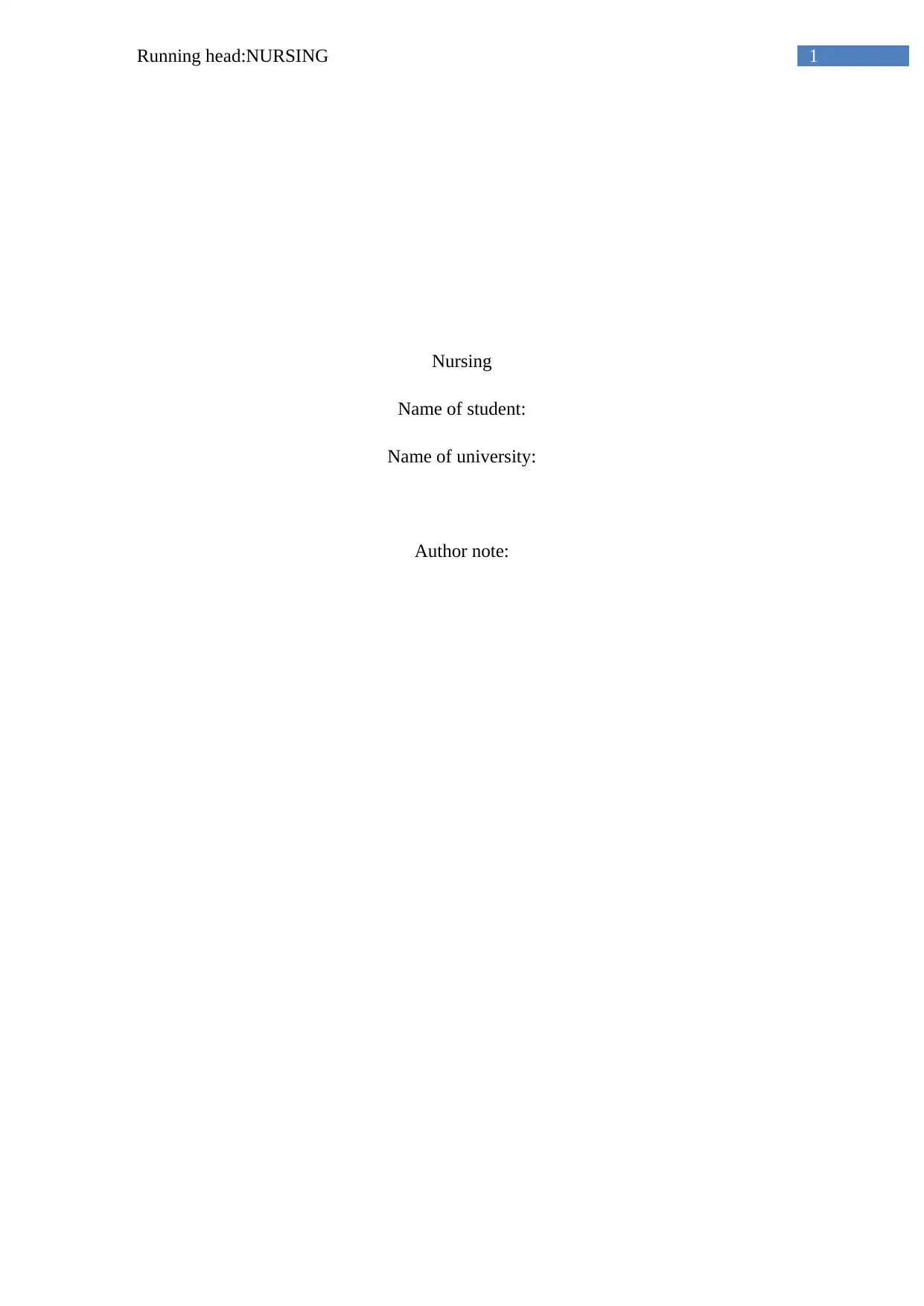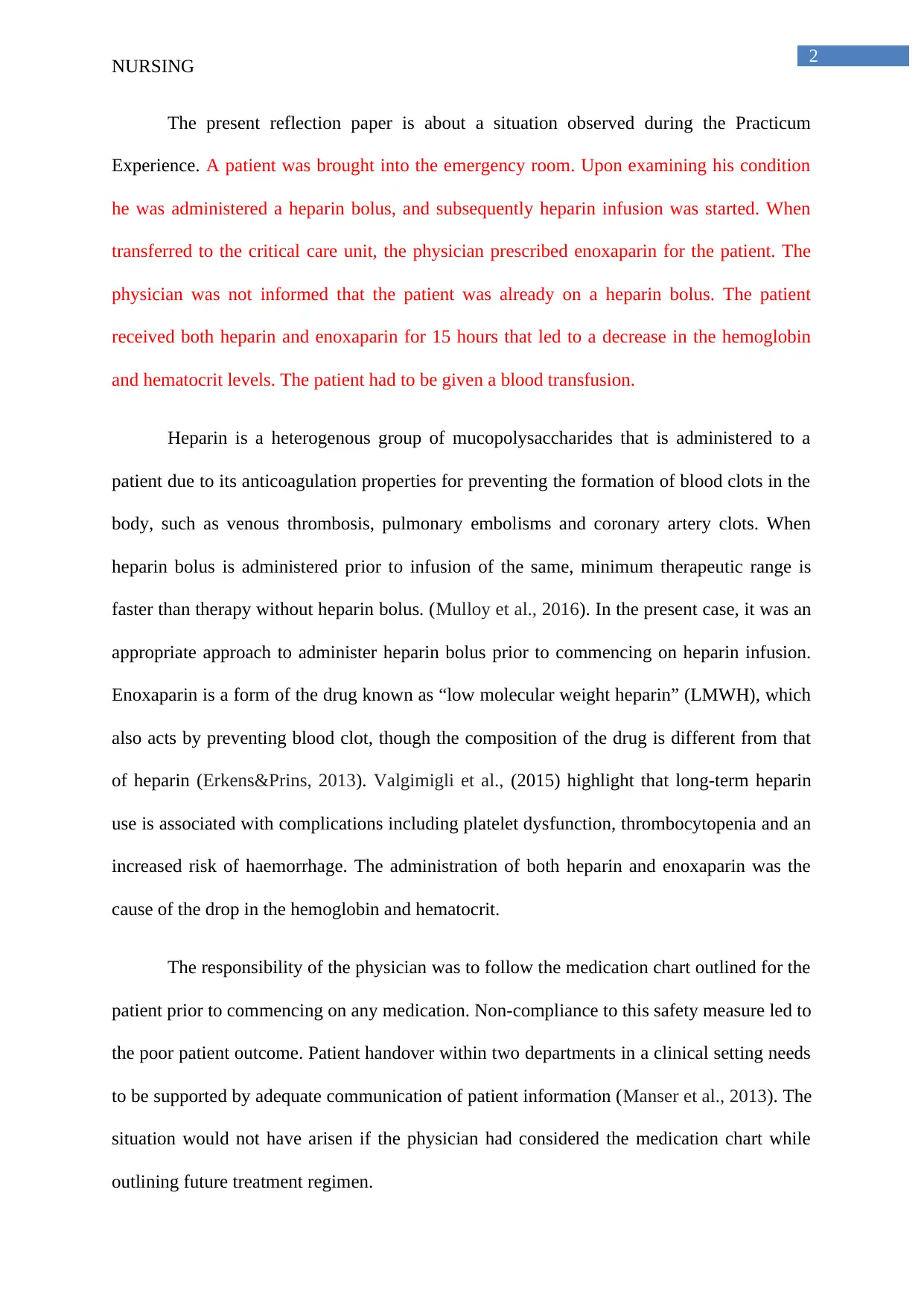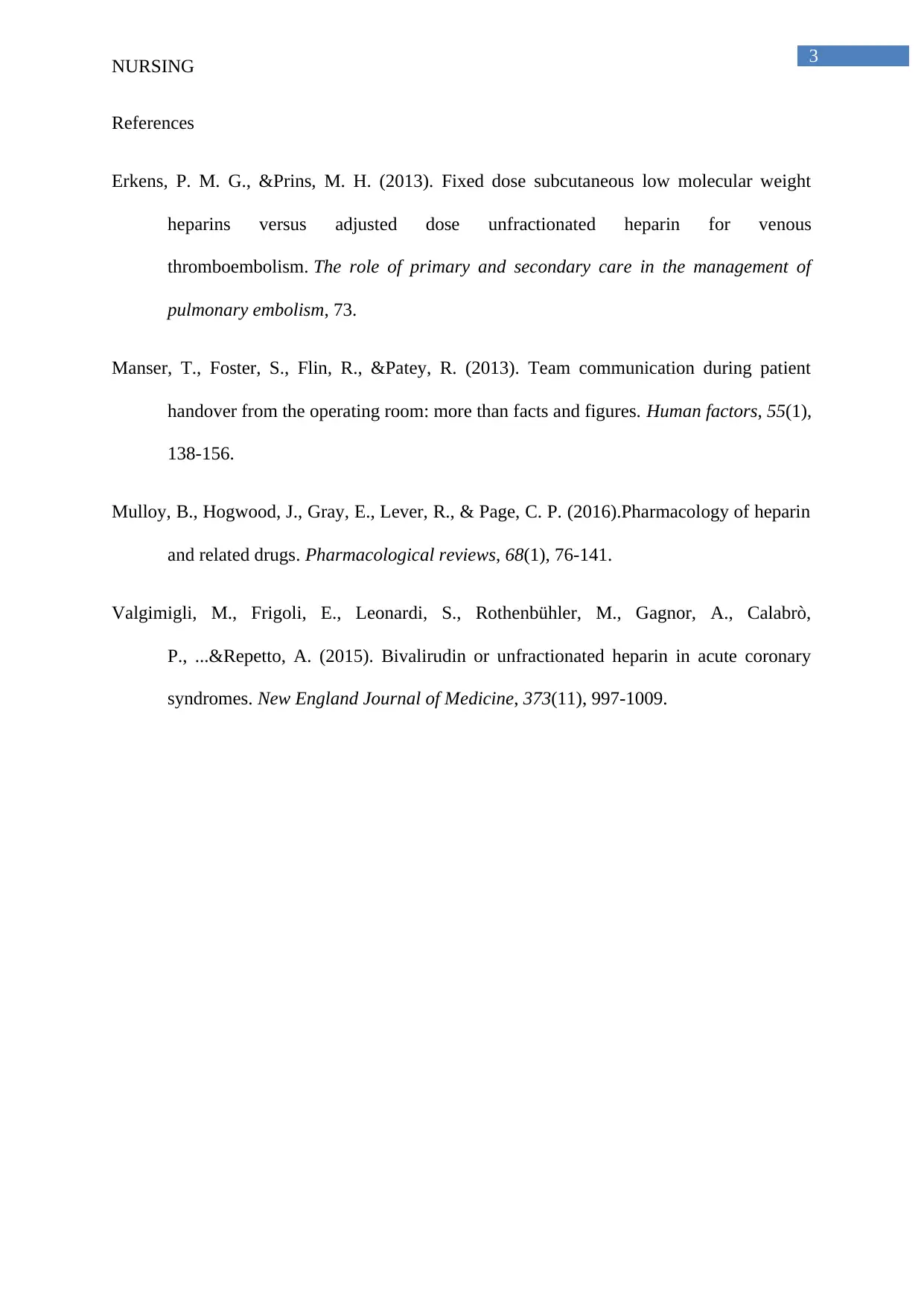Analysis of Heparin and Enoxaparin Administration: A Case Study
VerifiedAdded on 2020/03/16
|3
|581
|78
Case Study
AI Summary
This case study examines a critical incident in a hospital setting where a patient was administered both Heparin and Enoxaparin, leading to adverse effects. The patient initially received a Heparin bolus and infusion, followed by Enoxaparin prescription without considering the ongoing Heparin treatment. This resulted in the patient experiencing a drop in hemoglobin and hematocrit levels, necessitating a blood transfusion. The case highlights the importance of careful medication reconciliation, clear communication between healthcare providers, and adherence to established medication charts to prevent adverse drug reactions. The study emphasizes the role of the physician in reviewing patient medication history before prescribing new medications and the need for effective patient handover processes to ensure patient safety. The references provided support the discussion on Heparin and Enoxaparin pharmacology and their potential complications, including the risk of hemorrhage and thrombocytopenia. This case underscores the need for vigilance in clinical settings to avoid medication errors and promote positive patient outcomes.
1 out of 3




![[object Object]](/_next/static/media/star-bottom.7253800d.svg)